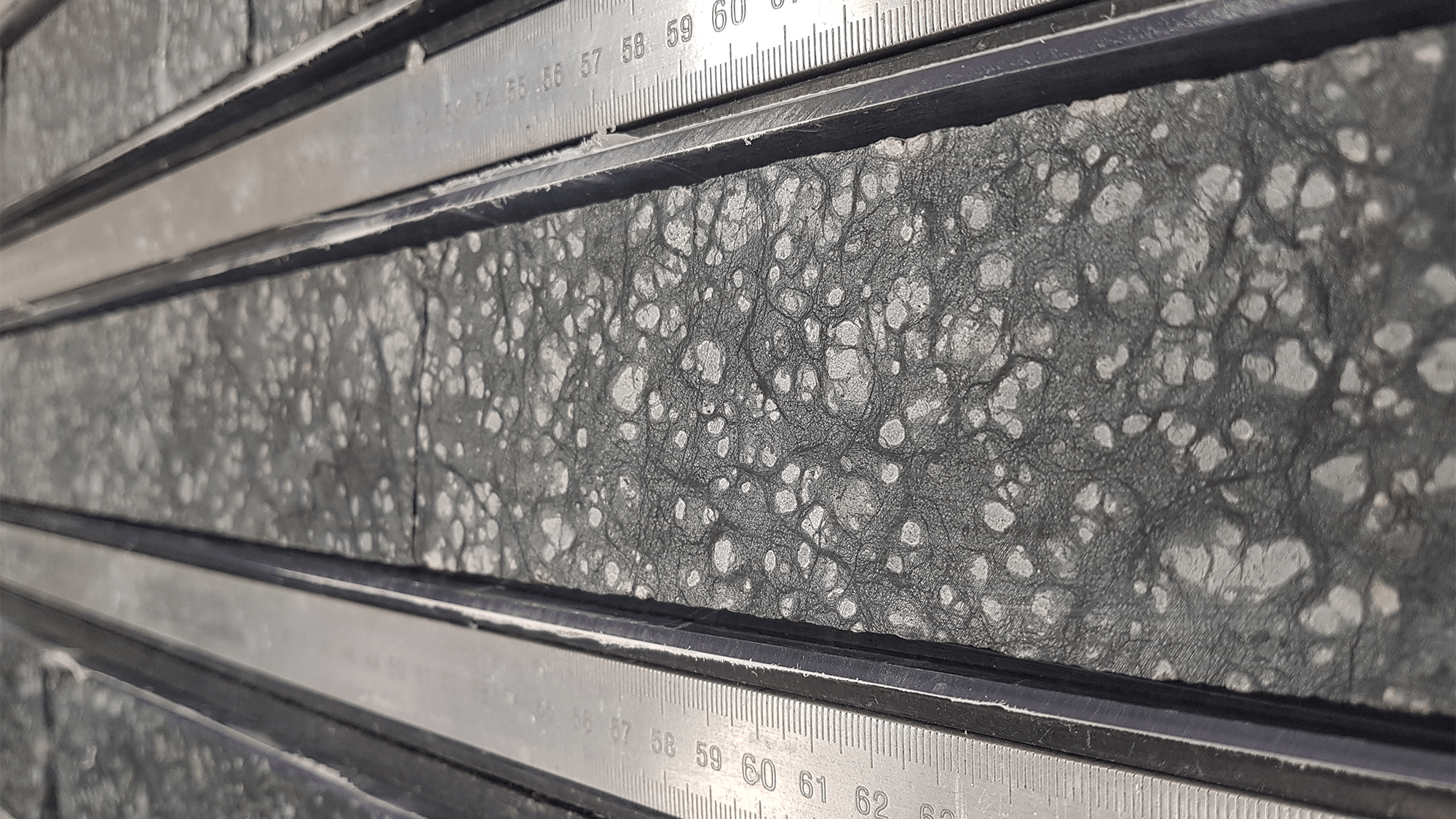For the first time, an international team of scientists recovered a long section of rocks that originated in the Earth’s mantle. This layer just below the crust is the largest part of the planet’s interior, so understanding it can tell us a great deal about some of Earth’s more explosive characteristics. This nearly continuous 4,160 feet (1,268 meters) of mantle rock is described in a study published August 8 in the journal Science. The rocks reveal a more extensive history of melting in the recovered rocks than the team initially expected.
[Related: Earthquake models get a big shakeup with clues buried in the San Andreas fault.]
The rocks were recovered from a tectonic window–a section of the seabed where rocks from the Earth’s mantle were exposed along the Mid-Atlantic Ridge. This ridge along the floor of the Atlantic Ocean stretches 10,000 miles from the Arctic to the southern tip of Africa and is part of the longest mountain range on Earth. According to NOAA, mid-ocean ridges like this one are geologically important, since they occur along the type of plate boundary where new ocean floor is created as the plates spread apart.
The core was uncovered in Spring 2023, during Expedition 399 “Building Blocks of Life, Atlantis Massif” aboard the ocean drilling vessel JOIDES Resolution. According to the team, the rocks will hopefully help unravel mysteries about the mantle’s role in the origins of life on Earth, how volcanic activity is generated when parts of the mantle melt, and how it drives the global cycles of crucial elements including hydrogen and carbon.
The team was led by the International Ocean Discovery Program. This international marine research consortium over 20 countries retrieves sediment cores. These cylindrical samples of rock, sand, and other sediment from the ocean floor are like a timeline of our planet’s history. Since the core was drilled, the expedition team has been compiling an inventory of the mantle rocks to better understand their composition, structure, and context.
“When we recovered the rocks last year, it was a major achievement in the history of the Earth sciences, but, more than that, its value is in what the cores of mantle rocks could tell us about the makeup and evolution of our planet,” Johan Lissenberg, study co-author and geologist at Cardiff University in Wales, said in a statement. “Our study begins to look at the composition of the mantle by documenting the mineralogy of the recovered rocks, as well as their chemical makeup.”

According to Lissenberg, the results were quite different than they expected. There was less of the mineral pyroxene and higher concentrations of magnesium in the rock. Both of these results from a higher amount of melting than the team would have predicted. This melting occurred as the mantle rose up from the deeper parts of the Earth towards the surface. The results from further analysis of this process could have implications for understanding how magma is formed and leads to volcanism.
“We also found channels through which melt was transported through the mantle, and so we are able to track the fate of magma after it is formed and travels upwards to the Earth’s surface,” said Lissenberg. “This is important because it tells us how the mantle melts and feeds volcanoes, particularly those on the ocean floor that account for the majority of volcanism on Earth. Having access to these mantle rocks will allow us to make the connection between the volcanoes and the ultimate source of their magmas.”
[Related: See 24,000 years of climate history at a glance.]
Additionally, this early study of the core has initial results on how an abundant mineral in mantle rock called olivine reacts with salty seawater. This process leads to a series of chemical reactions that generate hydrogen and other molecules that can fuel life. Scientists believe that this might have been one of the key processes that spurred life on Earth.
“The rocks that were present on early Earth bear a closer resemblance to those we retrieved during this expedition than the more common rocks that make up our continents today,” study co-author and Woods Hole Oceanographic Institution geologist Susan Q. Lang said in a statement. “Analyzing them gives us a critical view into the chemical and physical environments that would have been present early in Earth’s history, and that could have provided a consistent source of fuel and favorable conditions over geologically long timeframes to have hosted the earliest forms of life.”

